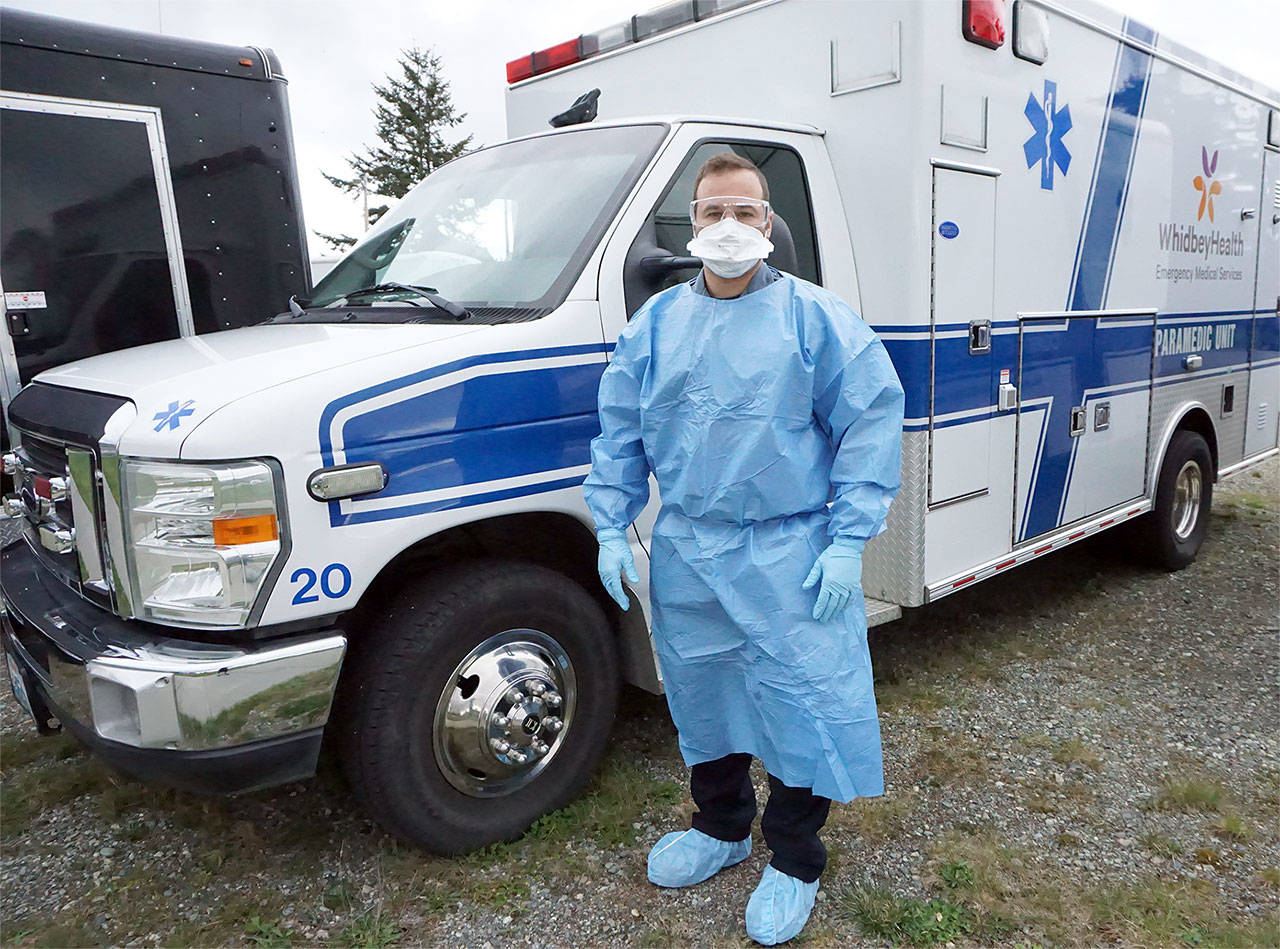As COVID-19 cases continue to rise, WhidbeyHealth Medical Center received 10 more ventilators and a few thousands more respirators, but staff members are forced to find creative ways to fill projected shortfall in personal protective equipment, according to officials at the public hospital district.
At the same time, the island’s fire departments and WhidbeyHealth Emergency Medical Service have reported fewer equipment deficits even as paramedics and EMTs are outfitted with “high level protection” for every call.
“We completely protect ourselves and the patient,” WhidbeyHealth EMS Manager Roger Meyers said in a statement.
Hospital officials were upbeat about equipment, facilities and needs during a Facebook Live meeting last week.
Chief Nurse Erin Wooley said the hospital received the additional ventilators from the national archive, bringing the hospital’s total to 16. Medical personnel are evaluating the new equipment to determine if it works properly, she said.
In addition, the hospital is transforming an ambulatory surgery post-anesthesia care unit into a 15-bed COVID-19 ward for patients who need critical care, she said.
Hospital officials have been forced to be unconventional in procuring the often-disposable items — from face masks to gloves to gowns — that protect workers from the virus. That means contacting a variety of different vendors, partnering with other government agencies and asking the public for help.
Tim Waldner, executive director of facilities and plant engineering, said the hospital received donations of 3,000 of the coveted N95 respirator masks, bringing the total to 11,000 on hand last week. The week before that, only about 6,500 were available, though tens of thousands have been on order.
There continues to be a national shortage of the masks, which remove 95 percent of particles 0.3 microns or greater, despite ramped up production, an increase in imports and guidelines for reuse.
The hospital only had enough surgical gowns to last seven to nine days while more weren’t expected for 13 to 16 days, he said. To fill the gap, an “assembly line” is being put together to make gowns out of plastic, Waldner said.
In order to conserve equipment, medical personnel at the hospital limit personal protective equipment to the level of COVID-19 risk, according to officials. One crew member will assess a patient from six feet away to determine if there is a need for additional protective measures.
Policies for personal protective equipment are stricter for medical personnel who care for patients within the confined environments of an ambulance. Paramedics and EMTs with WhidbeyHealth Emergency Medical Service and EMTs with North Whidbey, Central Whidbey and South Whidbey Fire Departments wear N95 masks, for example, on all medical calls.
When an ambulance crew responds to a call, Meyers explained, a single scout is sent to screen for COVID-19 symptoms from six feet away. If symptoms are present, all crew members also put on gowns.
“After a run involving a suspected or confirmed COVID-19 patient, we take off the PPE and our uniform,” he said in a statement. “We then take a shower, put on a clean uniform carried in an outside compartment on the ambulance and then wash our contaminated uniform. We also clean our shoes after each and every run.”
The ambulances are also completely disinfected after each transport.
Chief Ray Merrill with the Oak Harbor Fire Department said his department doesn’t do transports so responders don’t need the same level of personal protective equipment. The equipment used depends on the triage level of COVID-19 questions determined by emergency dispatchers. To reduce potential exposure, just one responder from the department will go with the ambulance crew.
In addition to equipment changes, WhidbeyHealth Emergency Medical Services is experiencing some facility changes as well. North Whidbey Fire and Rescue is sharing unmanned fire stations to allow EMS crews to be spread out and be housed individually to follow social distancing guidelines, according to Meyers.



